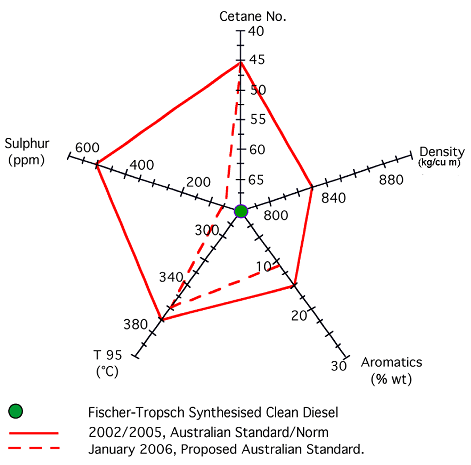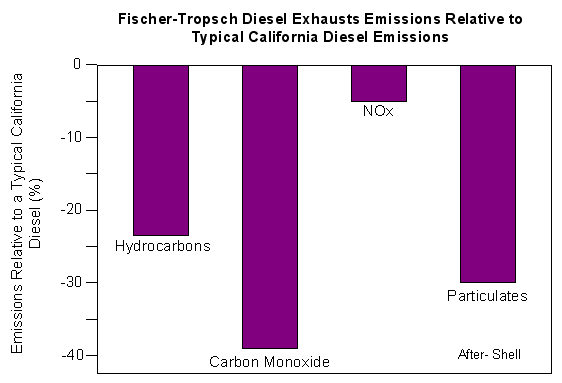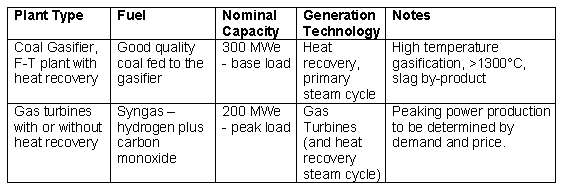Professor Ray Kearney’s contribution to On Line Opinion in March 2004 proposed the developed world (including Australia) switch from the use of traditional liquid fuels, based on petroleum, to bio-fuels that include ethanol and bio-diesel. Kearney’s contribution in November 2005 emphasised the danger of using petroleum-based fuels in terms of the adverse health effects that can be attributed to such fuels.
A reduction in poly-aromatic hydrocarbons (PAHs) and benzene in liquid transport fuels is a good step in reducing health hazards associated with the handling and use of liquid fuels that contain benzene and poly-aromatic hydrocarbons. It is a fact that petroleum-sourced liquid fuels do normally contain aromatic (benzene ring) compounds. In Australia, from 2005 petrol will contain less than 42 per cent PAH and from January 1, 2006 no more than one per cent by volume of benzene. Diesel, as sold in Australia, now commonly contains around 15 per cent PAH but from January 1, 2006, PAH will be a maximum of 11 per cent. Kearney, when keeping within the bounds of his expertise and skills, does make sense, since benzene and poly-aromatic hydrocarbons are recognised carcinogens.
Recommending that Australia and the rest of the developed world switch to bio-fuels to reduce the harm caused by traditional petroleum fuels is bordering on the ludicrous. Bio-fuels are an expensive play in terms of the cost of raw materials used in production, the energy required in producing and transporting those fuels, fuel efficiency and plant (vehicle) maintenance. The human cost of bio-fuels in terms of the use of arable land for the production of the sugarcane, oats, sunflower seeds and so on for producing those fuels would be unsupportable. If the true cost of bio-diesel were passed onto the end users, liquid transport fuels would be prohibitively expensive and have no market.
Advertisement
It is noted that in the March 2004 contribution Kearney recommends, “Assistance is needed in the general development of the bio-fuel industry. This includes new storages, crushers, refineries and associated infrastructure.” Here we have the call for massive subsidies and other government props, to support an unsupportable industry.
Kearney’s call for a reduction in pollutants emitted as vehicle exhausts is welcome. Given that the lowering or removal of benzene and poly-aromatic hydrocarbons, particulates, sulphur and nitric oxides (NOx) from vehicle exhausts is a good idea, other means to achieve this outcome besides the use of bio-fuels should be investigated. One source of liquid fuels that meet the criteria set out above are those produced through the Fischer-Tropsch (F-T) synthesis reaction, as developed in Germany in the 1920s and used to run Hitler’s war machine in the 1940s.
The F-T reaction is a bit of fancy chemistry that takes the products of coal gasification (hydrogen and carbon monoxide, known as syngas) and with the help of a catalyst turns them into liquid synthetic petroleum that contains NO nasty benzene/poly-aromatic type compounds. In the F-T reaction excess heat is produced. Much of this heat can be recovered and converted into electricity, in a fuels and electricity industrial complex, where good synergies are engineered into the total production system. This is a truly win-win situation for all energy users.
How good are F-T fuels?
Very good. From environmental, health, energy availability and maintenance stand-points, F-T fuels are very superior as demonstrated in the following figure.

Figure 1: F-T diesel environmentally related properties (as adapted from a Shell/Rentech publication.)
Advertisement
- Aromatics = Compounds containing benzene rings (~ the nasties). These include PAH (poly aromatic hydrocarbons and benzene).
- Cetane No. = A number that indicates how easily diesel combust. A high Cetane No. indicates good ignition and good vehicle performance (~ 46 minimum is the current standard).
- T95 = The temperature at which 95 per cent of diesel distils off. (~ Low T95 are desirable.)
The above figure has the position of F-T diesel in the centre of the plot and shows how F-T diesel exceeds the new Australian standard on diesel quality. Two axes, of particular interest, are the aromatics (benzene like compounds) and sulphur, i.e. both are zero. In the following figure (adopted from a Shell publication), exhaust characteristics for F-T diesel are shown.

Figure 2: F-T diesel exhaust emissions relative to a petroleum diesel base.
The second figure demonstrates the improved performance regarding emissions where F-T diesel is used in place of “normal” diesel. The reductions in all four types of pollutant are very significant. Note: Figures 1 and 2, should provide Kearney with reason to support the introduction of F-T fuels on the health grounds that he and this author consider so important.
From where does F-T fuel come?
F-T fuel needs a carbon source like almost any other fuel. Shell produces F-T fuels in a Malaysian plant from natural gas, whilst SASOL produces F-T fuels from coal in South Africa. Natural Gas has been proposed for the Western Australia Sweetwater Plant (Syntroleum - 2000) and for the WA Gorgon project (Chevron - 2003). Coal (brown) has been proposed as the carbon source for Victorian projects (APEL - 2002).
Australian F-T projects that look to using natural gas will be challenged by the demand for the gas by other industries (especially the power industry) and from Liquefied Natural Gas (LNG) exporters. Victorian brown coal with its +60 per cent moisture content has technical challenges for conversion to liquid fuels. High volatile bituminous coals, such as those found in abundance in central Queensland, have great potential for conversion to liquid fuels using the F-T synthesis, following a gasification step. A substantial liquid fuels plant coupled with a waste heat-fired power generation plant on the Queensland or Western Australian coalfields would be an asset for all Australia.
Synergies with black coal to gas to liquids
The use of F-T synthesis to produce liquid petroleum will result in the production of heavier fractions of hydrocarbons, fractions that Australia is already in deficit. The fractions will include lubricants, waxes and heavy fuel oil. As a first step, the blending of F-T diesel with “natural” diesel will allow refiners to more easily (and cheaply) meet the standards for diesel fuel that will come into force in 2006. The naphtha will become a refinery feedstock, and will most likely be blended with “natural” condensate to produce a petrol feedstock.
The most exciting prospect for F-T production is the development of fuel and power production complexes. As presented in the table below, a Fischer-Tropsch, coal-to-liquids (fuels) plant would be fed Syngas (hydrogen and carbon monoxide) from a black coal gasifier. Waste heat from both the gasifier and the F-T plant would be recovered and utilised in a steam cycle for power generation. The GTL plant would produce around 15 kbbl/day of synthetic petroleum product, plus an equivalent in water (say 2.3 ML/day), while the gasifier would produce around 250 kt/year of useful slag. The power production from heat recovery would be 300 MWe, with an option to supply additional power for peak demand by directly burning a portion of the syngas in gas turbine power stations. Note: kbbl = 1000 barrels i.e. @159 litres/barrel, 1kbbl = 159,000 litres.
The coal input would be around 2-2.5 million tonnes of good coal per year. The water produced in the F-T plant would be cycled back to the gasifier, where it would be used in syngas production. The complex would be close to being water neutral, an important feature in this water starved continent.

Table: Power generation units as part of a coal-gas-liquids complex.
To improve the plant economics, it is suggested that three GTL production trains be built over time, producing around 50 kbbl/day, and 1000 MWe, using 6-7 million tonnes of coal per year. This coal production is well within the production capacities of existing mines, and mines that are in the planning stage, and would for instance be a good proposition for developing mines in the southern Surat Basin of South East Queensland. Note: coal measures in the North Esperance region of Western Australia could also be candidates. The slag should be able to find uses that may be counted in CO2 emission intensity off-sets, and would find uses in construction.
Given that the Australian total oil consumption is around 900 kbbl/day in 2005, a contribution of 50kbbl/day of clean F-T fuel would be useful, but would need to be increased to say 200 kbbl/day to have a significant health and environmental benefit, i.e., the clean liquids fuels challenge is big.
Australia and liquid fuel demand
Australia’s liquid fuel consumption has been growing at around 2.5 per cent per year (1980 base). Our oil reserves and oil production have been declining. In terms of traditional petroleum supply, Australia probably has reached and passed its “Peak Oil” level; that is the level of reserves and production that can be maintained without significantly increasing cost. We must now find and develop new resources and do that as quickly as possible.
F-T synthetic petroleum based on black coal is one scenario that can work and provide clean fuels that will complement our well-being. Another is the development of the massive oil-shale reserves. Raw oil-shale petroleum however is rich in poly-aromatic hydrocarbons and will need to be refined to reduce or eliminate such constituents. Both F-T and oil-shale petroleum can be produced in the required quantities at bowser prices that will not collapse the Australian or world economies. The prices will however be greater that those enjoyed during the 1980s and 1990s in real terms.
(The international price of fuel is most likely to be dependant on two barely estimable factors: these being the fuel demand by the growing Chinese and Indian economies, and by the proximity of the Middle East suppliers to arriving at their Peak Oil hiatus. If Australia develops non-traditional oil resources, the option will exist for taking Australian supplies and production out of the World-Parity-Pricing system. That would be an interesting decision for government.)
Bio-diesel, ethanol, and so on, will not be able to replace a significant portion of the 1000 kbbl/day oil demand that Australia will soon be facing. Natural gas as LNG will be required for power generation and chemical production, while the hydrogen, solar and other renewable energy sources will remain as niche contributors or far-off dreams.
Conclusion
We do need cleaner petroleum, especially in our and our neighbours’ congested cities. Bio-fuels will not be able to be supplied in quantities sufficient either to make a significant contribution to the transport energy or reduce atmospheric pollutants.
Liquid fuels produced from black coal using the Fischer-Tropsch synthesis do provide exceptionally clean emissions, emissions that should satisfy even the most fastidious health expert - such as Professor Ray Kearney.
If Australia is to avoid a depression brought on by liquid fuel shortages coupled with excessive fuel costs, then it must develop alternative liquid fuel resources based on its plentiful solid fossil fuel reserves as quickly as possible.